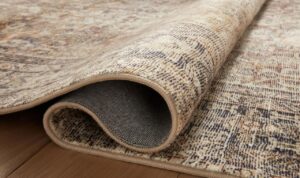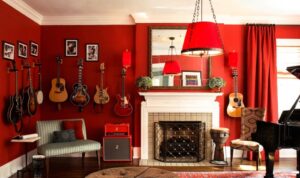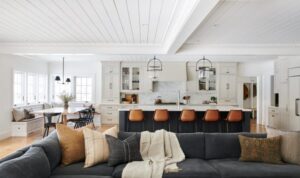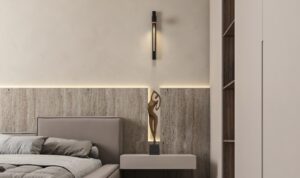Delving into house inside, this introduction immerses readers in a unique and compelling narrative, with a casual formal language style that is both engaging and thought-provoking from the very first sentence.
As we navigate through the intricacies of interior design, the 'house inside' emerges as a pivotal element that shapes not just spaces but also experiences.
Understanding the concept of 'house inside'
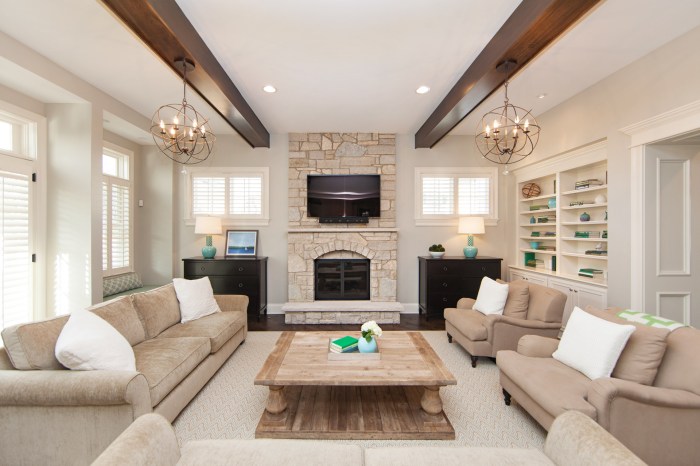
When we refer to the concept of 'house inside' in the context of interior design, we are focusing on the interior spaces of a home. This includes aspects such as layout, furniture, colors, decorations, lighting, and overall ambiance within the house.
It is important to consider the interior of a house in addition to its exterior because the interior design plays a significant role in creating a comfortable and functional living space. The way a house is designed inside can greatly impact the mood, productivity, and overall well-being of its residents.
Importance of 'house inside'
- The interior design of a house can affect the mood and emotions of the residents. For example, bright colors and natural light can create a sense of warmth and positivity, while dark and cluttered spaces may lead to feelings of anxiety and stress.
- Properly designed interior spaces can enhance the functionality of a house. Well-planned layouts and organization can make everyday tasks easier and more efficient.
- The 'house inside' also reflects the personal style and taste of the residents. It is a way to express creativity and individuality through furniture choices, decorations, and overall design elements.
- Comfort is another key aspect influenced by the interior design. Factors like furniture selection, lighting, and temperature control all contribute to creating a cozy and inviting atmosphere within the house.
Elements of interior design
Interior design is a crucial aspect of creating a welcoming and aesthetically pleasing environment within a home. Several key elements contribute to the overall look and feel of the 'house inside', including lighting, furniture arrangement, and color schemes. These elements play a significant role in shaping the atmosphere and reflecting the residents' personalities.
Lighting
Lighting is an essential element of interior design as it can dramatically impact the mood and ambiance of a space. Natural light can make a room feel bright and airy, while strategically placed artificial lighting can create a cozy or dramatic effect.
The type and placement of light fixtures can also highlight architectural features or specific areas within a room.
Furniture arrangement
The way furniture is arranged in a room can greatly influence the flow and functionality of the space. Proper furniture placement can optimize traffic flow, create conversation areas, and define different zones within a room. It is essential to consider the scale and proportion of furniture pieces in relation to the size of the room to ensure a harmonious balance.
Color schemes
Color plays a crucial role in interior design as it can evoke emotions, set the tone for a room, and tie together the overall look of a space. Different colors can create different effects - for example, warm tones like red and orange can create a cozy and inviting atmosphere, while cool tones like blue and green can promote a sense of calm and relaxation.
The choice of color scheme should reflect the residents' personalities and preferences.
Spatial layout and organization
When it comes to the spatial layout and organization of a house, there are various approaches that can be taken to optimize space utilization while maintaining a balance between functionality and aesthetics.
Different Approaches to Spatial Layout
- Open Concept: This layout involves removing walls to create a more open and fluid space, allowing for better flow and natural light.
- Zoning: Dividing the space into zones based on functionality, such as living, dining, and sleeping areas, can help define each area's purpose.
- Furniture Placement: Strategic placement of furniture can help create designated areas within a space while maximizing functionality.
Tips for Optimizing Space Utilization
- Use Multi-Functional Furniture: Opt for furniture pieces that serve dual purposes, such as a sofa bed or a storage ottoman.
- Vertical Storage: Utilize vertical space by installing shelves or cabinets to store items and keep the floor area clutter-free.
- Mirrors: Incorporating mirrors can create an illusion of space and reflect natural light, making the room appear larger.
Importance of Balance Between Functionality and Aesthetics
- Functionality: Ensuring that the space is practical and serves its intended purpose is crucial for a comfortable living environment.
- Aesthetics: The visual appeal of a space plays a significant role in creating a welcoming and harmonious atmosphere, enhancing the overall experience.
- Balance: Finding the right balance between functionality and aesthetics is key to creating a space that is both practical and visually pleasing.
Materials and textures
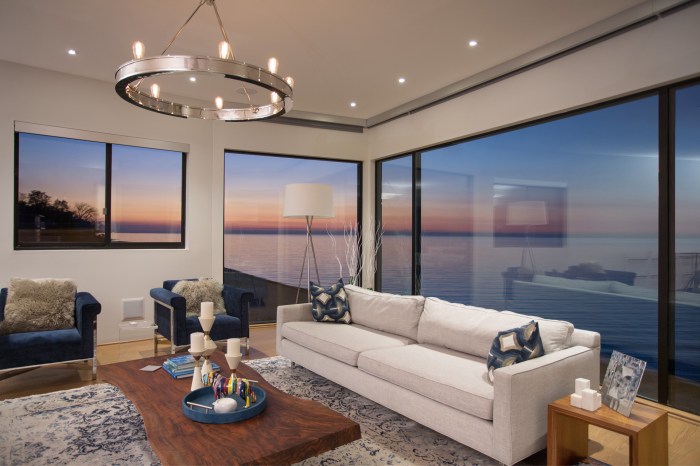
When it comes to interior design, the choice of materials and textures plays a crucial role in shaping the ambiance of a space. Different materials and textures can evoke various emotions and set the tone for the overall design.
Common Materials and Textures
- Wood: Wood is a versatile material that adds warmth and natural beauty to a space. It can be used for flooring, furniture, or decorative elements.
- Stone: Stone textures like marble or granite can bring a sense of luxury and elegance to a room. They are often used in countertops, flooring, or feature walls.
- Metal: Metals like stainless steel or brass can add a modern and industrial touch to a space. They are commonly used for light fixtures, furniture accents, or hardware.
- Textiles: Fabrics such as velvet, silk, or wool can introduce softness and comfort to a room. They are used for upholstery, curtains, or throw pillows.
- Glass: Glass textures create a sense of openness and transparency. They are ideal for windows, doors, or decorative elements like vases or sculptures.
Impact of Materials and Textures on Ambiance
The choice of materials and textures can significantly impact the ambiance of a space. For example, using warm wood tones can create a cozy and inviting atmosphere, while sleek metal finishes can give a room a contemporary and sophisticated feel.
Trends in Sustainable Materials
- Recycled Materials: Designers are increasingly using recycled materials like reclaimed wood or repurposed metals to reduce environmental impact and promote sustainability.
- Bamboo: Bamboo is a fast-growing and renewable material that is becoming popular for flooring, furniture, and decor due to its eco-friendly properties.
- Cork: Cork is a sustainable material harvested from tree bark without harming the tree. It is used for flooring, wall coverings, and accessories in interior design.
- Low VOC Paints: Volatile organic compound (VOC) free paints are gaining popularity for their non-toxic properties, contributing to healthier indoor air quality.
Final Summary
In conclusion, the 'house inside' serves as a canvas where personal stories intertwine with design principles, creating harmonious living environments that resonate with individuality and comfort.
Frequently Asked Questions
What is the significance of considering the interior of a house in addition to its exterior?
The interior of a house plays a crucial role in shaping the living experience, influencing comfort, functionality, and aesthetics.
How do factors like lighting, furniture arrangement, and color schemes impact interior design?
These factors influence the ambiance and mood of a space, creating a cohesive and visually appealing environment that reflects the residents' style.
What are some common materials and textures used in interior design?
Materials like wood, metal, and fabrics, along with textures such as smooth, rough, or patterned surfaces, are frequently employed to add depth and character to interiors.
How can one optimize space utilization for various rooms inside a house?
Optimizing space involves smart storage solutions, multifunctional furniture, and strategic layout planning to make the most of available square footage.
What are the benefits of using sustainable materials in interior design?
Sustainable materials promote eco-friendliness, reduce carbon footprint, and contribute to healthier indoor environments, making them a popular choice for conscientious homeowners.

